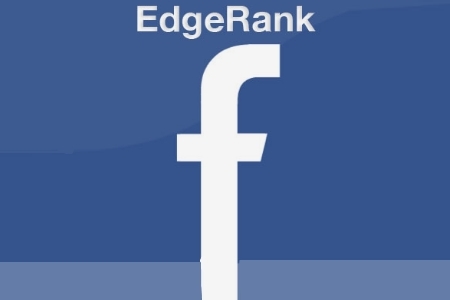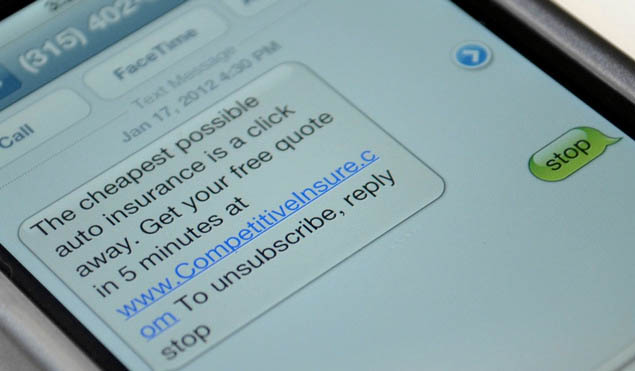Samantha Murphy is one of those business women that you either really like, or you’re really scared of. She’s known to be one of the most vocal people in the industry and has made it clear her stance regarding fraud, professionalism and anyone who sees her as being weak because she’s a woman. She’s gone after more than a few guys on Facebook making it clear that the industry doesn’t need more sexist comments, let alone half-naked photos of “chicks.” That stance has made her immensely popular with other women in the industry and has allowed her to build in a very short period of time a very successful and growing business at Marathon Ads. She took some time out of her busy schedule to answer some questions about what she is doing, how she is pushing forward and what changes she is trying to make in the industry.
How did you start in this industry?
After losing my job with a PR agency in 2001, I answered a newspaper ad for a position in advertising. I had no idea what they actually DID, even after that first interview, but they called me back for a second where they offered me the job. While I was still unsure of what it was they did, it was a nice salary and commission and benefits. So I took it. By month 3 I was bringing home solid commission checks. A few months later, I was hooked. I loved everything about it. One of my favorite things to do in life is to interact with people, get to know them and listen to what their needs are and help them meet their goals. Those also happen to be some of the most crucial aspects in being successful in this industry.
What inspired for you to create your own network?
A few things pushed me to this point. First and foremost, my vision of a network was different from anywhere I worked for. Because my partner, Whitney Bradley, and I both share this same vision, it made things come together for us quickly. Secondly, to be frank, I was getting tired of being called an “AM” or being told I couldn’t do something that I knew would benefit the company I worked for. You don’t spend 11 years in an industry and not have ideas that can work. To be consistently told no…well, its frustrating, to say the least. Already, some of those ideas I’ve had for years are being put to use and have brought us success in only our first month since launch. Lastly, the money factor. Seeing only a small portion of commissions for the hard work you do doesn’t bode well with me after that much time spent.
Marathon Ads is more than just a network, but also the Agency of Record for advertisers. How does that benefit affiliates, and is that where networks need to focus on?
I believe it is where networks need to focus on. Constantly ONLY re-brokering campaigns and relying on other companies to make sure your bills are paid, it can get dicey. Especially when starting up a company. As long as you know and trust the advertiser that you are becoming the Agency for, and have the paperwork in place with them, you are already a step ahead. I also think being the AOR helps cash flow because you are usually able to get some sort of prepay for your services. Affiliates are happy knowing they are working direct with the AOR because you are the only person who they can get the campaign from at the best possible rate. I know that I personally prefer working with other companies when they are the AOR for a advertiser, or, of course, they own a product themselves. Our goal is to have more advertisers that we are the Agency for.
If someone wanted to get started as an affiliate, what source of traffic and what type of offers would you recommend they try first?
I come from the old school world of email and banner display. To me, personally, that is always a good place to start. And I would start with a little of everything, to be honest. You won’t know what works unless you do testing on your lists to see. I have affiliates who do well with 4-5 different verticals. I always ask a new affiliate of mine a series of questions…regarding what has been working best for them and how they promote their offers…before sending them campaigns I think might work for them. I can credit [former boss and CEO of GMB Direct] Gene Mikhov with most of this as he was very clear to me about how this worked best for him, and he was right.
In the time since you opened your network, what have you learned that you’d like to share business owners?
You don’t HAVE to have investment funds to start up. You CAN start off with a low overhead and make money back in your first month. Just have all of your ducks in a row before going live. Work deals with your vendors (tracking platform, etc) and with your advertisers (get prepay where you can). If you have some affiliates that you have known for a long time and trust, see if they’ll work something out with you to give you some better payment terms for the first few months. And repay them in the future for doing right by you (higher payouts, weekly payment terms, whatever you can do for them).
If you could change immediately one thing about the industry that seems to be an overriding issue, what would it be?
Fraud. Nothing makes me want to put my foot through my monitor more than finding fraud. I wish networks were more careful with who they allowed to get through their system. We are so strict. Both Whitney and I vet any applications that come through so thoroughly, you’d think we were the feds. I’ve seen companies lose hundreds of thousands (and more) as a result of (especially) fraud from certain “education lead gen companies”. I firmly believe that the hammer would not have dropped on the world of education lead generation in our industry, this past July, if it wasn’t for this specific chain of companies. It would be remiss for me to believe that fraud will ever just stop, but the rampant use of it now is a black eye on the affiliate world.
How has the industry changed significantly since you started?
Well, when I started, this industry sure wasn’t this big. We did not have this many choices of whom to work with. Sometimes that can be a good thing, on the other hand, sometimes it can be dangerous. There are so many of these new “networks” coming out that either have no clue what they are doing and just think they can make a quick buck or they do know what they are doing…in the shadiest way possible. While I enjoy the choices we have with regards to new business, as a company owner, I have to be extremely careful. Other things that have changed: We worked on CPM basis only when I started. It was all email and display. Networks didn’t work too much with call centers (that was all done by the advertisers themselves), SEO and social were not part of the equation.
You’ve presented Marathon Ads professionally, kept away from drama and questionable publicity. Do you think the industry is moving away from “flashy networks” and why?
I sure hope so. Those who are that flashy have no substance. They aren’t making the core relationships that will last for year after year. They’re making their money now. But in 5, 10, 15 years…where will they be? Look at companies like Rex Direct and Cutting Edge. They are solid companies who have been around for years. They model themselves professionally, not only at the shows, but online (Facebook, Twitter, etc). They don’t have to be flashy or gaudy. They do their jobs, have hundreds of long-term relationships. For some reason, the relationship aspect of this industry is suddenly being crapped on as if its not an important thing. Those people who believe that will suffer in the long run. I know that the only reason I felt confident in being able to start up my own company, was the extensive list of very long-term relationships I’ve kept and enjoyed for the past 11 years. I still work with some companies that I did back in my first month of cold calling in 2001. These are people I know and trust that would bend over backwards to help me succeed. So far, they’ve come through for us.
You’ve been very outspoken about issues facing women in the industry. What do you feel one of the top issues that needs to be addressed is?
I believe that objectification is always going to be an issue in this industry. I’ve worked for companies that held Playmate Parties and didn’t even consider the possibility that a woman might win an affiliate contest (which they did after I brought it to their attention and yes, a woman DID win too!). I’ve worked for companies that treated me like I was to be taking their notes, when I was doing about $50k/month more in margin than they were. The lack of respect is mind-boggling. Yes, there are some women who act irresponsibly but no more than the gaggle of men who act like 12 year old boys. More of the solid women in our industry need to start companies on their own and run them like the rock stars they are.
How do you feel a woman run business operates differently? How does this benefit the industry?
Hmm, well, I know quite a few men who run their companies very well. I don’t think its a male/female difference in operation. I think its more personal. More about the people involved, not their gender.
How would you respond to those that claim that women must “accept” sexism, nudity, and obnoxious sexual comments to work in this industry?
I’d say they’re worthless to me. I would not do business with those who claim that. And in the end, that is their loss. One day, they’ll be about to land a big deal with some other company, and make an obnoxious joke about a woman to a man who doesn’t appreciate it. Egg on their face in the end. Quite frankly, they’re not worth my time.
Who are a few people that have influenced or inspired you in the industry?
I have learned a lot of what to do and also what NOT to do in this industry from working with so many people. It would be difficult to name them all and how they’ve helped me. I can say that there are a few women that have been role models for me: Jennine Rexon, Missy Ward, Trish Hawthorne, Stacey Sicard and Erin Garcia. All of these women have been around for a long time and have been constant reminders of where I want to be. They are strong, hard-working and always remain professional. As a matter of fact, it was an encouraging phone call with Stacey that led me to make my final decision to go start up Marathon Ads. We definitely need more women like them around.
How do you balance raising a family with being the owner of a company? Is it harder for women with children to open companies?
It’s a tricky balance, I can tell you that…and still a work in progress. I’m working really hard at finding a way to balance my family (husband and 2 children) and the business. I am hoping it gets easier after the first few months, because so far it might be my biggest challenge since launch. This is one instance where my aforementioned role models will be a big help for me. I’ve been in touch with some of them already to see what has worked best in their experience. I don’t know if it is harder for women with children to open a company than without, because I’ve only just done it this once. I do think opening a company is difficult and challenging either way, there just might be different challenges each face. Again it comes down to finding that balance. I do hope that I am a role model for my 5 year old daughter. Because women have so many more obstacles than men in the workforce, I want her to believe that she can achieve anything she puts her mind to. If you want to start a company, start one and own it…in more ways than one.
What advice would you give to a young woman starting in this industry?
I remember what it was like starting out. Things were so much different for the women in this industry then. I can recall going to the AdTechs and Affiliate Summits back in the day and the Account/Affiliate Managers were wearing too short skirts and “barely-their” shirts. There was no respect given, but they certainly got the majority of the attention. I would like a young woman starting out to know that angle won’t work if you want to succeed for a lengthy period of time. If you’re planning on becoming something in this industry, you need to act like a professional (or as they say in sports, “act like you’ve been there”) and work hard. Know what you’re talking about, fluff won’t get you anywhere. Learn from the best, as I have. These women (and men) who have been staples of Affiliate Marketing for so long…they’ve been here this long for a reason. The best thing you can do to succeed is to educate yourself. I can honestly say this job isn’t a 9-5 job anymore. The internet doesn’t sleep. Check in on your emails, reports and make sure nothing is going wrong…after hours. Your clients and publishers will be grateful for the attention you’ve given them and be more apt to come back to you for more business. Also, make long-term relationships. They will be there when you need them the most.
 What is your dream car?
What is your dream car?
I’m a super lame mommy…all I want is a Honda CR-V so I have more room to bring my kids and our stuff places.
A little side note…in telling my husband I was doing this interview, he gave me the golden advice of making sure I don’t say “I can see Russia from my house.” Just wanted to share that pointer for those doing your future interviews. Shout out to my hubby!
























